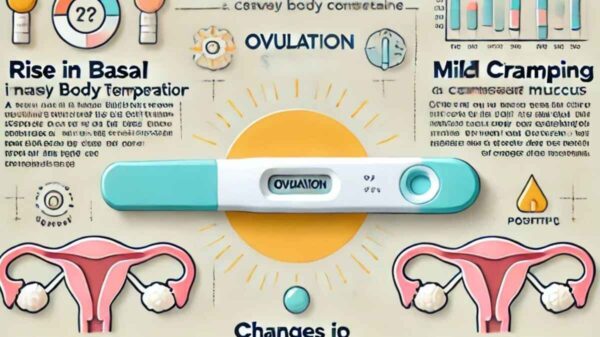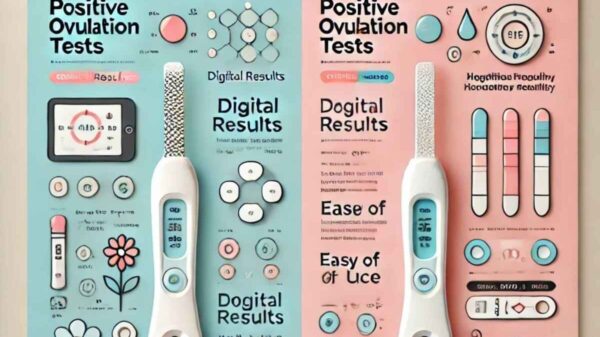Probable signs of pregnancy often create excitement or curiosity, but confirmation is essential for clarity and action. This phase introduces methods like clinical tests, advanced home kits, and ultrasounds, guiding you to make informed decisions. Whether you’re you’re experiencing symptoms like missed periods, nausea, or breast tenderness, this article explains how to validate these signs with certainty.
Methods to Confirm Pregnancy
Home Pregnancy Tests (HPTs) Your First Step
How They Work
Home pregnancy tests (HPTs) detect human chorionic gonadotropin (hCG), a hormone produced after implantation. The presence of hCG in urine is a key indicator of pregnancy. Testing too early may yield inaccurate results, so waiting until after a missed period is important. HPTs are a reliable tool for confirming probable signs of pregnancy.
Best Practices
For accurate detection of probable signs of pregnancy, use first-morning urine when testing. This sample has the highest concentration of hCG, ensuring reliable results. Follow test instructions carefully to avoid errors and confirm pregnancy early. Proper testing helps identify key pregnancy indicators effectively.
Top Brands
- Clearblue: Offers digital and early detection options.
- First Response: Known for detecting pregnancy up to 6 days before a missed period.
Blood Tests The Gold Standard
Types of Blood Tests
Qualitative hCG Test
A qualitative hCG test confirms whether the hormone hCG is present in the body, indicating pregnancy. This test provides a simple yes or no answer, helping to confirm probable signs of pregnancy. It is often used early in pregnancy to verify if implantation has occurred.
Quantitative hCG Test
Benefits
Ultrasound Visual Confirmation
When to Get an Ultrasound
An ultrasound is typically recommended after 6-8 weeks of pregnancy to confirm fetal viability and estimate gestational age. During this time, the heartbeat can often be detected, and the ultrasound provides essential insights into the development and position of the embryo. Early ultrasounds help healthcare providers assess the pregnancy’s progress and ensure a healthy start.
What It Shows
- Gestational Sac: The first visible sign of pregnancy on an ultrasound, showing the space where the embryo will develop.
- Fetal Heartbeat: Often visible by 6-7 weeks, confirming the pregnancy’s viability and indicating the embryo’s growth.
Types of Ultrasounds
- Transvaginal Ultrasound: Provides clear, detailed images of the uterus and early pregnancy, typically used in the first trimester for better visibility of the gestational sac and embryo.
- Abdominal Ultrasound: More commonly used in later stages of pregnancy, offering a broader view of the developing fetus and placental location.
Clinical Signs Observed by Healthcare Providers
- Hegar’s Sign: A probable sign of pregnancy, characterized by the softening of the lower uterine segment, typically observed around 6-8 weeks. This change is due to increased blood flow and hormonal influences.
- Ballottement: A technique used during a pelvic exam where the examiner gently taps or pushes on the uterus, causing the fetus to rebound or move. This sign usually appears around 16-18 weeks of pregnancy.
- Uterine Enlargement: During a pelvic exam, the uterus becomes palpable as it expands to accommodate the growing fetus. This is a key probable sign of pregnancy, especially noticeable after 8 weeks.
How to Choose the Best Confirmation Method
FactorBest OptionWhy?
- Early Detection Blood Test: The First Response HPT detects pregnancy as early as 6 days before a missed period, offering an early and reliable indication of pregnancy.
- Accurate Monitoring Quantitative Blood Test: A quantitative blood test tracks hCG levels precisely, accurately measuring pregnancy progression and confirming fetal health.
- Visual Confirmation Ultrasound: An ultrasound, typically performed after 6-8 weeks, confirms pregnancy viability and provides visual confirmation of fetal health and development.
- Cost-Effective Options Home Pregnancy Tests: Affordable and easily accessible home pregnancy tests provide a cost-effective option for early detection, offering convenience and reliability for those looking to confirm pregnancy at home.
Common Questions About Confirming Pregnancy
When Should I Take a Pregnancy Test?
- For HPTs: Wait at least a week after a missed period for accurate results. Testing too early may lead to false negatives due to lower hCG levels.
- For Blood Tests: Blood tests can detect pregnancy as early as 7-12 days post-ovulation, providing more precise results than home pregnancy tests.
Can Medications or Conditions Affect Test Results?
- False Positives: Occasional but can occur due to fertility treatments or certain medical conditions.
- False Negatives: Often caused by testing too early or diluted urine.
What if I Get Conflicting Results?
Consult a healthcare provider for a blood test or ultrasound to resolve discrepancies and obtain a definitive diagnosis. These tests offer accurate confirmation of pregnancy and fetal health.
When to Consult a Doctor
Signs of Complications
- Heavy bleeding.
- Severe abdominal pain.
- Dizziness or fainting.
For Routine Care
- Schedule your first prenatal visit within 6-8 weeks of pregnancy.
- Discuss prenatal vitamins and lifestyle adjustments.
Brands and Services That Help in the Confirmation Phase
- First Response Early Result Pregnancy Test: Detects hCG as early as 6 days before a missed period, offering a quick and reliable result.
- Clearblue Digital Pregnancy Test: Provides clear, easy-to-read results with “Pregnant” or “Not Pregnant” outcomes, making it user-friendly.
- Quest Diagnostics and LabCorp: Trusted providers of blood tests that accurately measure hCG levels to confirm pregnancy.
- OB-GYN Clinics: Offer professional ultrasound services and evaluations to confirm pregnancy, monitor fetal health, and estimate gestational age.
Stories of Pregnancy Confirmation
Early Detection
Resolving Uncertainty
Emily’s experience highlights the importance of confirming probable signs of pregnancy with reliable methods. While her two HPTs showed conflicting results, a quantitative blood test provided clarity by confirming the presence of hCG, and an ultrasound at 7 weeks confirmed the health and viability of the fetus. This illustrates how advanced testing and medical consultations can offer definitive answers and peace of mind during early pregnancy.
From Doubt to Certainty
Confirming pregnancy begins with recognizing probable signs. Advanced tools like ultrasounds and blood tests can help transition from probable signs of pregnancy to definitive answers. By consulting with healthcare professionals, you can ensure accurate detection and early care for both you and your baby
Take the Next Step in Your Pregnancy Journey
Explore our comprehensive guide on confirming pregnancy and beginning your prenatal care! Get expert tips on nutrition, wellness, and preparing for your baby’s arrival.











